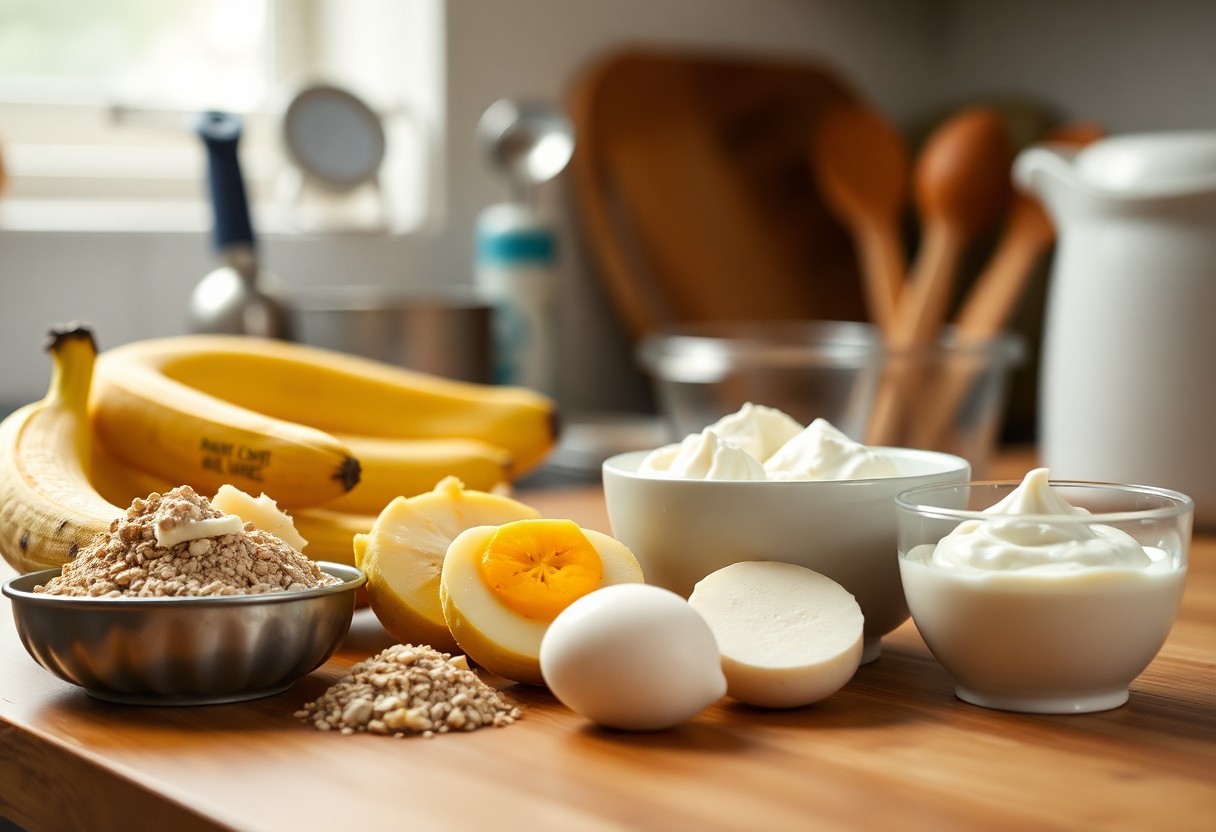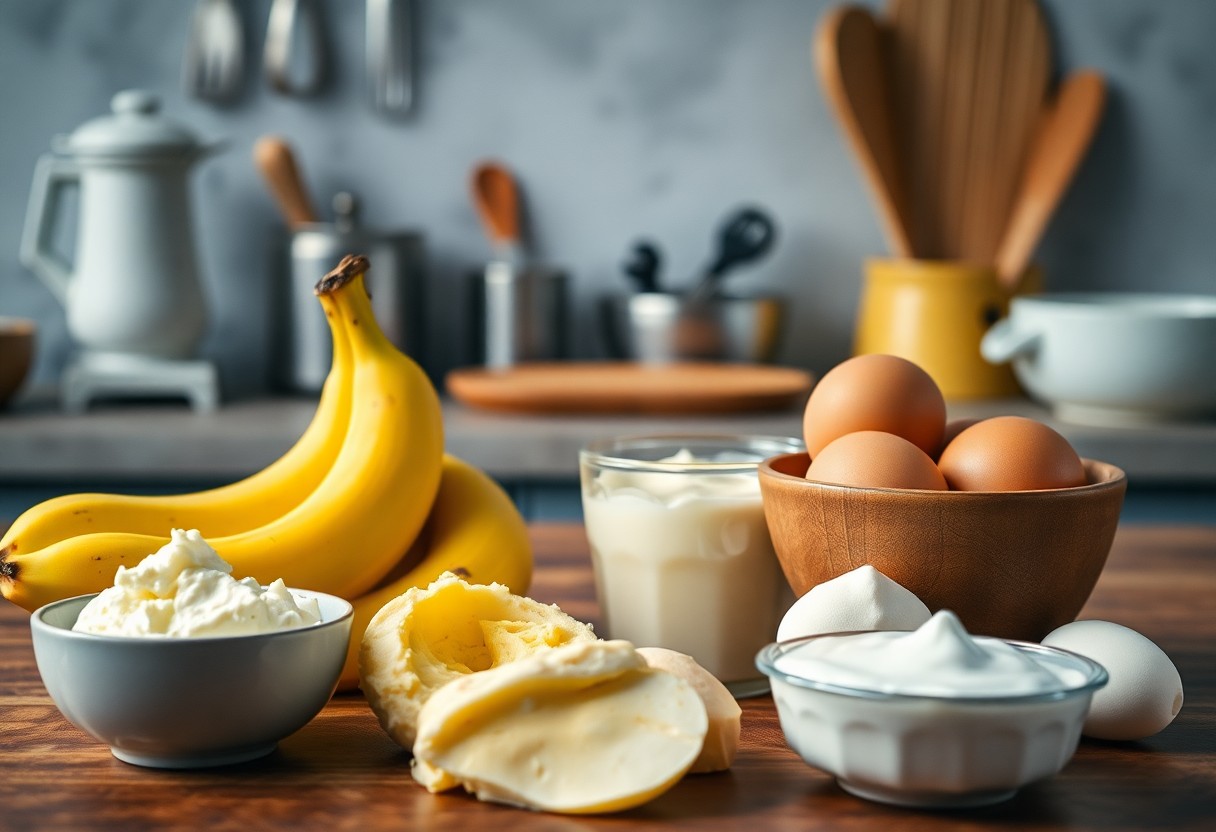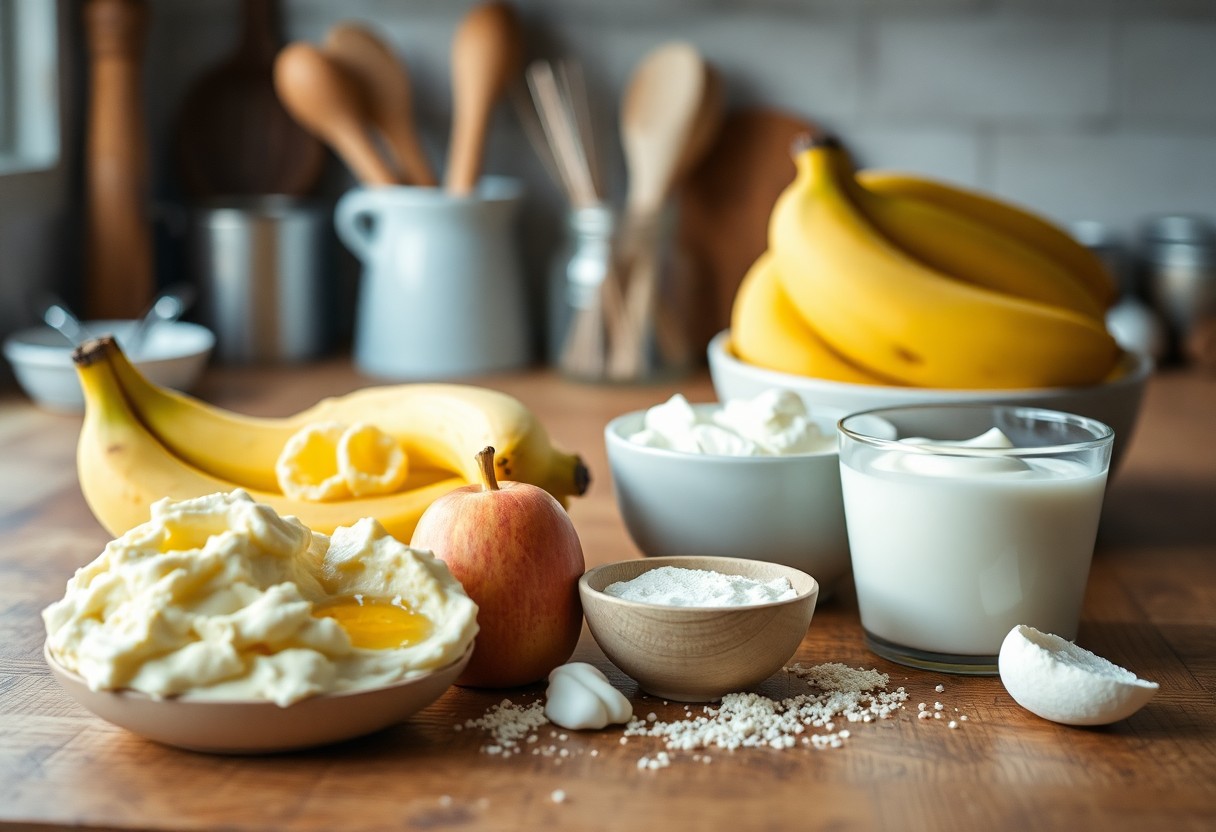What’s the Best Egg Substitute for Baking?
Substituting eggs in your baking recipes doesn’t mean compromising on taste or texture. Whether you’re following a vegan diet, dealing with egg allergies, or simply ran out of eggs, you’ll find several reliable alternatives that can perfectly mimic eggs’ binding, leavening, and moisturizing properties in your baked goods. Before you reach for a replacement, it’s crucial to understand what role eggs play in your specific recipe, as this will help you choose the most effective substitute. In this guide, you’ll discover the top egg alternatives and learn exactly when to use each one.
Understanding the Role of Eggs in Baking
To successfully replace eggs in your baking, you need to understand their multiple functions in recipes. Eggs serve as binding agents, provide structure, act as leavening agents, and add moisture and richness to baked goods. When you’re choosing an egg substitute, it’s necessary to identify which of these properties you need to replicate for your specific recipe.
Binding Agent
Agents that hold your ingredients together are vital in baking, and eggs excel at this task. When you heat egg proteins, they create a network that binds flour, sugar, and other ingredients into a cohesive structure. This binding property ensures your cakes, cookies, and breads maintain their shape and don’t crumble apart.
Leavening Agent
Along with baking powder and soda, eggs help your baked goods rise. When you beat eggs, they trap air bubbles that expand during baking, creating a light and fluffy texture in your final product.
At the molecular level, egg proteins form a structure around these air bubbles, stabilizing them as the batter heats up. This process is particularly important in recipes like sponge cakes and soufflés, where the air incorporation directly affects the final texture of your baked goods.
Moisture and Richness
The liquid content in eggs provides necessary moisture to your baked goods, while the fats in the yolks contribute to a rich, tender texture. You’ll find these properties particularly important in cakes, muffins, and quick breads.
With approximately 75% water content and natural emulsifiers in the yolks, eggs help create a smooth batter and ensure even distribution of fats throughout your mixture. This results in baked goods that stay fresh longer and have that desirable melt-in-your-mouth quality you’re looking for.
Common Egg Substitutes
It’s crucial to understand your options when replacing eggs in baking. Each substitute brings unique properties to your recipes, affecting texture, binding, and leavening differently. Your choice of egg substitute can make or break your baked goods, so knowing when to use each alternative will help you achieve the best results.
Applesauce
Substitutes like applesauce work wonderfully in recipes where moisture and binding are key. You can use ¼ cup of unsweetened applesauce to replace one egg in your baking. This option adds natural sweetness and works particularly well in cakes, muffins, and quick breads.
Flaxseed Meal
The combination of ground flaxseed and water creates a gel-like consistency that mimics eggs’ binding properties. You’ll need to mix one tablespoon of ground flaxseed with three tablespoons of water and let it sit for 5-10 minutes before using.
In fact, you can enhance your baked goods’ nutritional value while maintaining structure when you use flaxseed meal. This substitute adds beneficial omega-3 fatty acids and fiber to your recipes, making it an excellent choice for health-conscious baking.
Yogurt
Around ¼ cup of yogurt can replace one egg in your baking recipes. You’ll find this substitute particularly effective in cakes and quick breads, where it adds moisture and helps create a tender crumb.
Also, you can choose between regular and plant-based yogurt options to suit your dietary needs. The protein content in yogurt helps with structure, while its acidity aids in leavening when combined with baking soda.
Silken Tofu
To replace eggs in denser baked goods, silken tofu offers an excellent protein-rich alternative. You’ll need to puree ¼ cup of silken tofu until smooth for each egg in your recipe.
Further, you can expect your baked goods to maintain moisture and structure when using silken tofu. This substitute works particularly well in brownies, quick breads, and cookies where you want a rich, dense texture without compromising on protein content.
Choosing the Right Substitute for Your Recipe
Once again, selecting the perfect egg substitute depends on several key factors that will influence your baking results. You’ll need to consider the type of recipe you’re making, the desired texture and flavor of your final product, and any dietary restrictions you or your guests may have. Understanding these elements will help you make an informed decision and achieve the best possible outcome.
Type of Recipe
With each baking recipe having unique requirements, you’ll want to match your egg substitute to the specific needs of what you’re making. Dense baked goods like brownies work well with fruit purees, while light and airy cakes might benefit more from commercial egg replacers or aquafaba. Your choice will significantly impact the final structure and consistency of your baked goods.
Desired Texture and Flavor
Right from the start, you should consider how your chosen egg substitute will affect the texture and taste of your baked goods. Some alternatives, like mashed bananas, will add moisture and density while contributing their distinct flavor. Others, such as commercial egg replacers, aim to replicate eggs’ binding properties without altering the taste.
Flavor profiles vary significantly among egg substitutes, and you’ll want to consider this when making your selection. Applesauce adds sweetness, while ground flaxseed brings a slightly nutty taste. If you’re aiming for a neutral flavor, consider options like silken tofu or commercial egg replacers that won’t compete with your recipe’s intended taste.
Dietary Restrictions
One of the main reasons you might be looking for egg substitutes is to accommodate dietary restrictions. Whether you’re baking for someone with egg allergies, following a vegan diet, or dealing with other dietary considerations, you’ll need to ensure your chosen substitute aligns with these requirements.
At this stage, you’ll want to examine the ingredients in your egg substitutes carefully. Some commercial replacers might contain allergens or ingredients that don’t align with certain dietary needs. Plant-based options like chia seeds or aquafaba are typically safe for most dietary restrictions, but you should always verify the specific requirements you’re trying to meet.
How to Use Egg Substitutes
Your success in using egg substitutes depends on understanding their specific roles in your recipe. Different substitutes work better for different functions – some are great binders, while others excel at providing moisture or helping with leavening. Select your substitute based on what the eggs do in your original recipe for the best outcome.
Measurement Conversions
Among the most common conversions, one egg equals: 1/4 cup of mashed banana, 1/4 cup of applesauce, 1 tablespoon of ground flaxseed mixed with 3 tablespoons of water, or 3 tablespoons of aquafaba. Your measurements should be precise for consistent results.
Tips for Best Results
Before using any egg substitute, consider these imperative guidelines:
- Let your substitute reach room temperature
- Mix wet ingredients thoroughly
- Add extra leavening agent when needed
- Follow recipe-specific adjustments
Assume that you’ll need to experiment a few times to perfect your results.
It’s worth noting these additional considerations:
- Test small batches first
- Adjust liquid ratios as needed
- Monitor baking time closely
- Document successful modifications
Assume that each recipe will require slightly different approaches to achieve the best results.
Testing Your Egg Substitute
Despite having a reliable egg substitute on hand, you’ll need to experiment before achieving perfect results in your baking. Different recipes may require specific adjustments to maintain the right texture and structure. Your success depends on understanding how each substitute behaves in various baking conditions and being prepared to fine-tune your recipes accordingly.
Baking Trials
Baking small test batches helps you evaluate how your chosen egg substitute performs. Start with a simple recipe you’re familiar with, and observe the differences in texture, rise, and moisture content. You can better assess the effectiveness of your substitute by comparing the results to the original egg-based version.
Adjustments Needed
Testing might reveal that you need to modify other ingredients in your recipe. Your liquid ratios may require adjustment, or you might need to add extra leavening agents. Pay attention to baking temperature and time, as these factors often need fine-tuning when working with egg substitutes.
Another aspect to consider is the binding strength of your substitute. You may need to adjust the amount of substitute used, as some alternatives require different proportions than eggs. If your baked goods are too dense or crumbly, try increasing or decreasing the amount of substitute in your next batch. Keep notes of your modifications to replicate successful results.
Final Words
Drawing together all the egg alternatives discussed, you’ll find that your choice of substitute depends largely on the specific role eggs play in your recipe. For moisture and binding, applesauce and mashed bananas work wonderfully. When you need structure and leavening, commercial egg replacers or aquafaba are your best options. Ground flaxseed delivers excellent binding properties while adding nutritional benefits to your baked goods. By understanding these alternatives and their unique properties, you can confidently adapt any baking recipe to meet your dietary needs or preferences.







